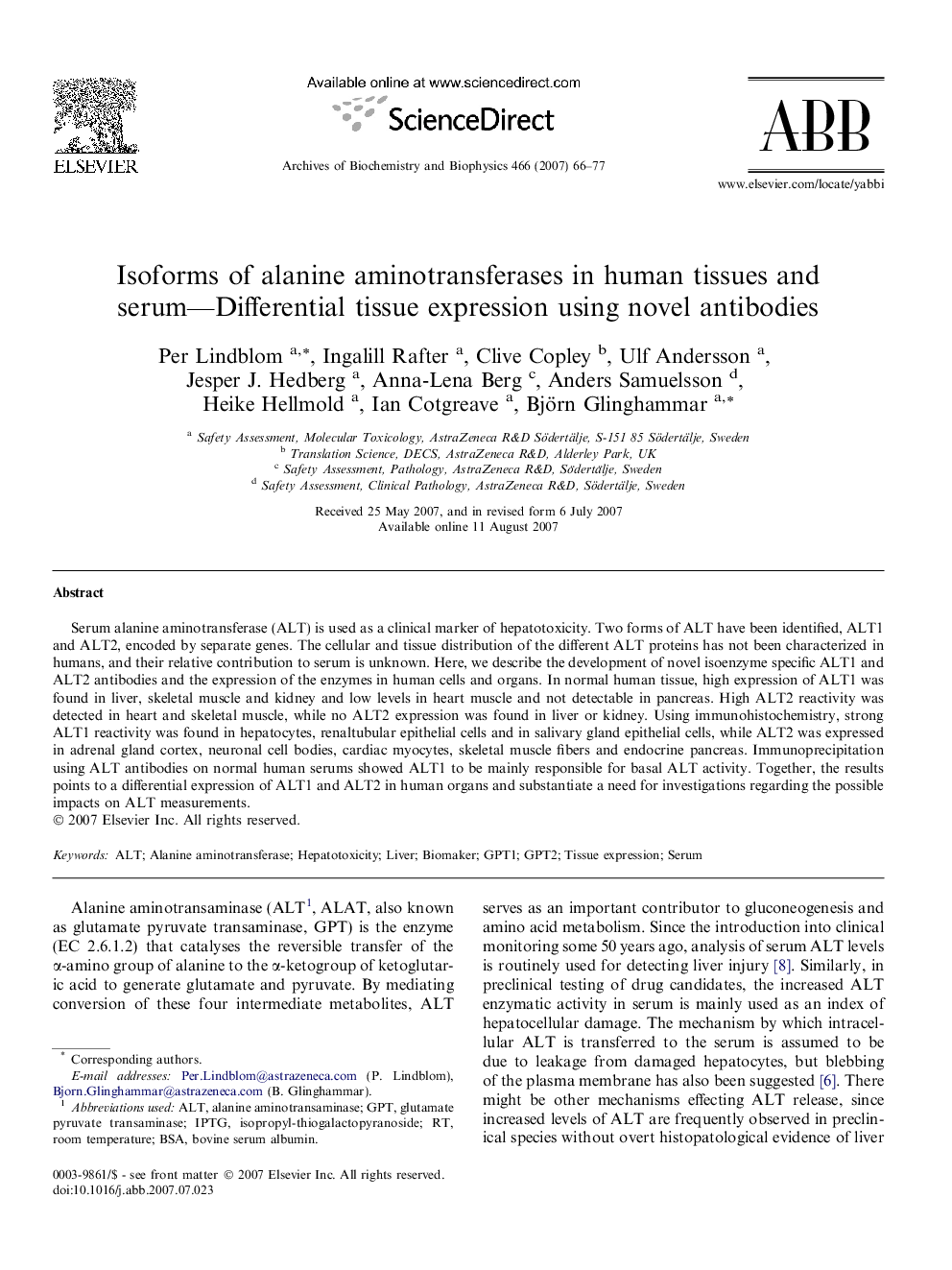| Article ID | Journal | Published Year | Pages | File Type |
|---|---|---|---|---|
| 1927022 | Archives of Biochemistry and Biophysics | 2007 | 12 Pages |
Serum alanine aminotransferase (ALT) is used as a clinical marker of hepatotoxicity. Two forms of ALT have been identified, ALT1 and ALT2, encoded by separate genes. The cellular and tissue distribution of the different ALT proteins has not been characterized in humans, and their relative contribution to serum is unknown. Here, we describe the development of novel isoenzyme specific ALT1 and ALT2 antibodies and the expression of the enzymes in human cells and organs. In normal human tissue, high expression of ALT1 was found in liver, skeletal muscle and kidney and low levels in heart muscle and not detectable in pancreas. High ALT2 reactivity was detected in heart and skeletal muscle, while no ALT2 expression was found in liver or kidney. Using immunohistochemistry, strong ALT1 reactivity was found in hepatocytes, renaltubular epithelial cells and in salivary gland epithelial cells, while ALT2 was expressed in adrenal gland cortex, neuronal cell bodies, cardiac myocytes, skeletal muscle fibers and endocrine pancreas. Immunoprecipitation using ALT antibodies on normal human serums showed ALT1 to be mainly responsible for basal ALT activity. Together, the results points to a differential expression of ALT1 and ALT2 in human organs and substantiate a need for investigations regarding the possible impacts on ALT measurements.
